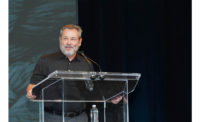On a recent episode of the American Supply Association’s Town Hall Interview Series, ASA Vice President of Sales and Membership Mike Miazga interviewed Mechanical Contractors Association of America CEO Tim Brink. Brink answered questions submitted by ASA members, talking about issues of prime importance throughout the PHCP-PVF supply chain, including how MCAA is best helping its members during the pandemic, changing customer expectations with mechanical contractors, talk of e-commerce solutions driving purchasing solutions, the current labor situation as well as his predictions for 2021. ASA’s Town Hall Interview Series is an exclusive benefit for ASA members and is being shared with BNP Media’s Plumbing Group brands Plumbing & Mechanical and Supply House Times, the official publication of ASA.
MM: ASA members have seen a change in customers’ expectations with residential contractors. What have you seen in as far as customer expectations with mechanical contractors?
TB: I think it’s just like with the evolution of email, texting and the cellphone. With more project staff working at home, customers are expecting even more today than they did before; around the clock availability to the contractors that they’ve hired. So that’s putting extra pressure on the members to respond to customers and change the way they’re doing business.
There’s a greater need than ever for mechanical contractors to look at a project, get out ahead of it, pre-plan and work with supply chain partners so they can build, fabricate and manufacture in their offices where it’s safe and controlled, and then just get into the jobsite.
MM: Are there technology solutions that you guys would like to see suppliers and distributors implement to make doing business with them easier?
TB: Absolutely. Everyone's going to the BIM modeling on big projects — 3D modeling and building in the virtual environment before you even get to the job site. We have a product called WebLEM, a web-based labor estimating manual. We have partnered with our manufacturer supplier council members to get all the product data linked to it. So now WebLEM has all of the labor units in it, and our goal is to have all of the product data in it.
Your membership and our membership can work hand-in-hand by making sure if distributor members are dealing with one of our members, their products are in our labor estimating manual. That way, when our contractors go from estimate to model, manufacturing and fabrication, all they have to do is take their model, download the materials, send it to their supplier partner and then we’re off to the races. They know exactly what’s going to be needed and they’re part of the whole process.
MM: How long do you think it’ll be before mechanical plumbing contractors begin not just utilizing, but depending on an e-commerce solution to drive their purchasing process?
TB: As we shift more into really heavy fabrication where they’re ordering thousands of pipe, valves and fittings at a time, there’s going to be a tendency to utilize e-commerce, where it’s easy for the fab shop manager to go in and order exactly what they need. That’s where the partnerships are really going to be important. If local or regional suppliers can develop a system to where they work with their contracted partners, that’s going to help facilitate more productivity and more ease of doing business.
On the other hand, having direct relationships with suppliers is so vital in this industry. I was talking with a few of our contractors this week and they say yes, you can order parts online, but the real value of a supplier partner is you call them up and say, “I need this here on this date,” and if you have a good partnership, they’re going to get it there at that date. You reward each other with the partnership and the business. And you simply can’t replace that with e-commerce.
MM: How quickly do you expect consumer demand to pick up this year?
TB: A lot of our members, depending on where they're located, are seeing things pick back up. I think the areas getting hit the hardest are the coasts. California, Oregon and Washington are basically shut down again. Arizona and the East coast have also been hit pretty hard as cities have shut down. The Midwest has a lot of activity, so I think there’s going to be work out there to bid.
The people who have a broad range of work they do are going to be more successful than shops that just specialize in one area of the mechanical industry because in some areas, there are fewer jobs and more bidders, and the people with the better resumes are going to get the jobs.
MM: What areas of the economy do you think might rebound first?
TB: It's predicted with the Biden administration there’s going to be some infrastructure spending. We have wastewater and infrastructure projects coming up that are going to be good. We have a shift away from fossil fuels and toward green energy and Biden is going to be a big proponent in that. Our members are heavy into the fossil fuel business — pipelines and refineries. This causes a lot of uneasiness within the membership.
Fossil fuels are part of everything that we have. Almost everything manufactured has some sort of oil component in it. So it’s going to take a while to wean away from that. But we’re America — we’re not going to fall flat on our face. We are not going to let that happen. We’re going to continue to move forward.
MM: How do you think ASA can better strengthen its relationship with MCAA?
TB: There’s a lot of opportunity to strengthen our relationship. We have an innovation and technology department here headed by Sean Maguire. His job is to look into how we can automate and create digital collaboration points for everybody on the construction team, from the owner to the general contractor, the subcontractor and to our supplier partners. This way, all parties can be in the same virtual environment and know what’s coming, know what’s needed of them, when things have to arrive in and where in the schedule that they fit. So I think there’s a tremendous opportunity for our supplier partners to get more involved in the projects now more than ever.
MM: In regards to fully coordinated drawings and models, where can a distributor add value? One ASA member says they envision a world where material lists live within models and are seamlessly transmitted to the distributor. Is this a desire of MCAA members in 2021 and beyond?
TB: Absolutely. I mentioned earlier our WebLEM product, and that’s where we see the future going. We have to model all of the large products now. We do 3D models and coordinate virtually with the other trades. The models have to be built on product data so when you send the measurements to the fab shop they’re accurate.
Knowing what supplier partners rep and sell is very important so contractors can include that product in the model; they can take that list directly from the model, then to the estimate, and send it electronically to supplier partners. The answer to the question is yes, fully coordinated models are very much on the forefront of our minds.
MM: ASA estimates a 100,000 folks in our industry are going to retire within the next decade. Because of that, one of our three major initiatives going forward is our PROJECT TALENT platform, which helps our members attract the next generation to the workforce. What is MCAA doing to address the labor shortage?
TB: Going forward, we’re really addressing the way we solicit, recruit and select future apprentices. We’re committed to the idea that we need a diverse workforce; a workforce that is inclusive. We have a joint initiative with the International Training Fund to do just that. We’re revamping all of the procedures on how you select apprentices so we can better model the neighborhoods and cities we work in. We want the workforces to be representative of the makeup of the cities, and by doing that, we broaden the pool to include a lot more really qualified individuals to get into the trades.
We’re doing the same thing on the employees in the office side as well. We have 60 student chapters across the country with universities, and we have a very involved program where we work with our local affiliates to help them interact with students and get those engineering construction management students into our local contractors’ offices.
So we’re revamping the career department. We’re working with United Association on the apprenticeship side, trying to enhance these programs so we can get more people into the industry.





